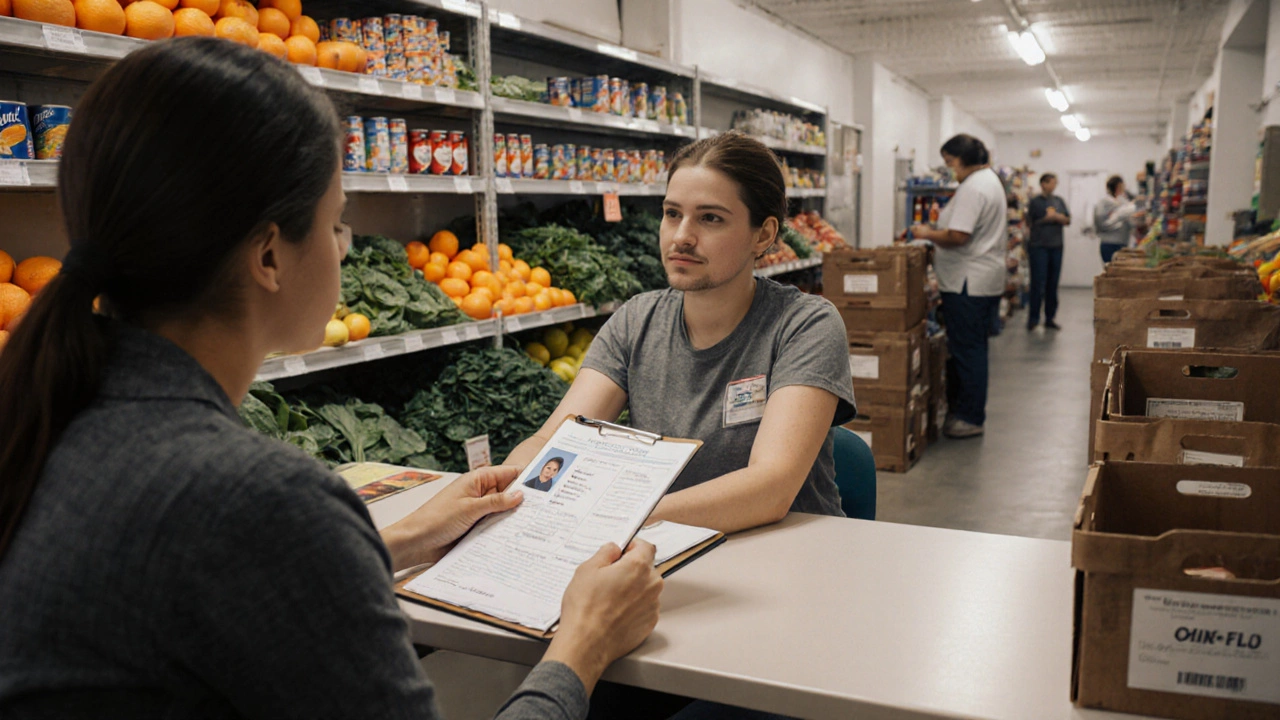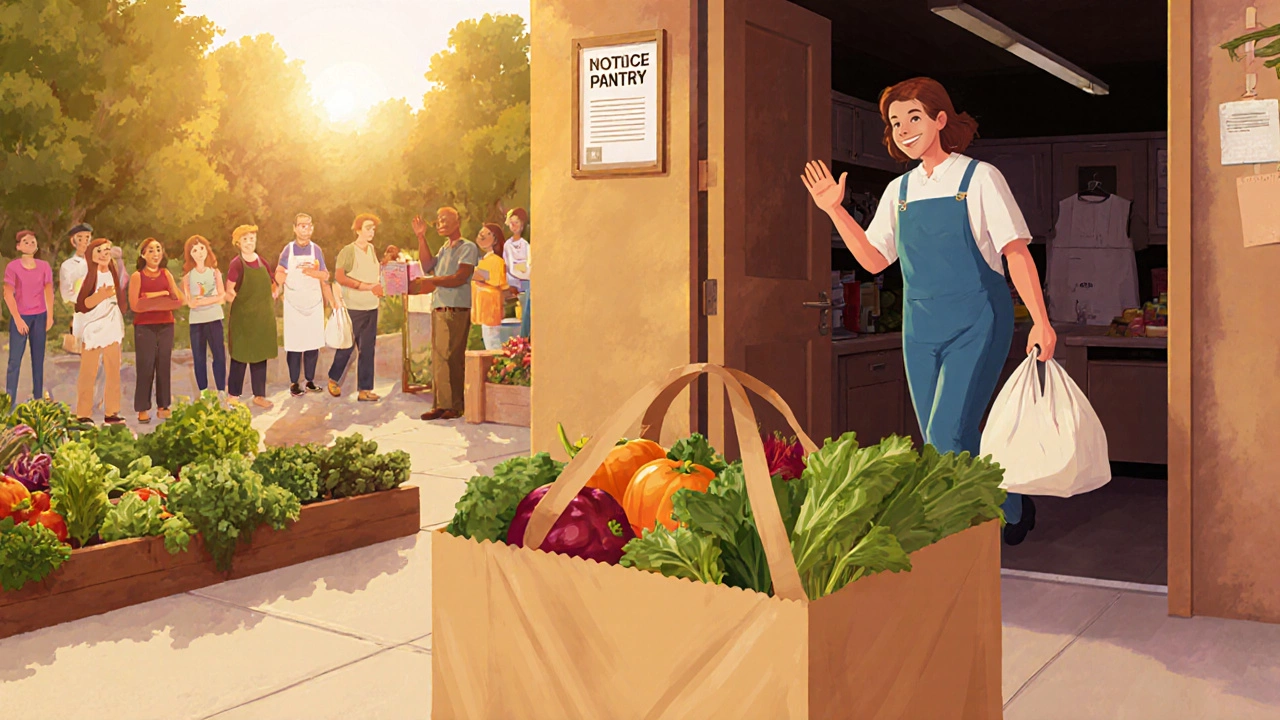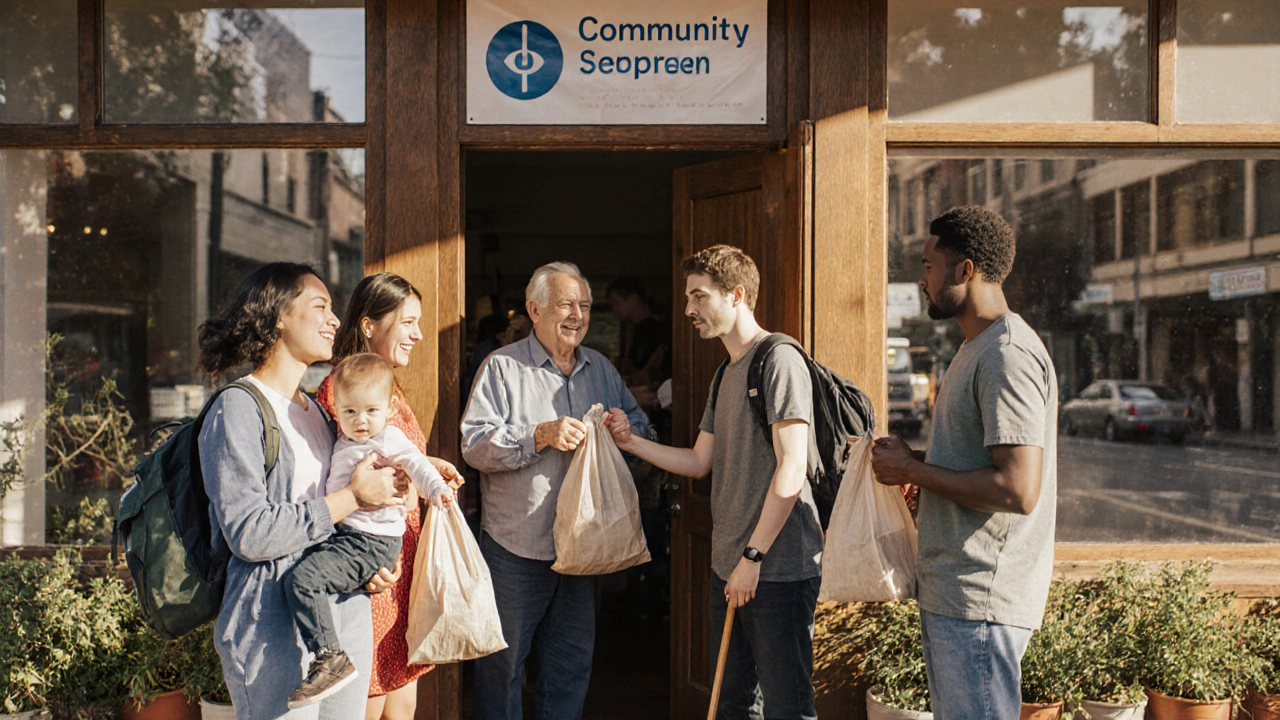Food Bank Eligibility Checker
This tool helps you determine if you might be eligible for food bank assistance based on the most common criteria in Australia. The process is simple and confidential.
If you’re wondering whether you can walk into a local food bank a community‑run pantry that provides free groceries to people facing hardship and get help, you’re not alone. Many people assume they need a specific income level, a referral, or an invitation from a charity. The truth is less rigid, but the process does involve a few steps and some paperwork. Below you’ll find a clear, step‑by‑step rundown of who qualifies, what you’ll need, and how the system works in Australia today.
Key Takeaways
- Most Australian food banks welcome anyone experiencing food insecurity, regardless of income.
- Eligibility often hinges on recent hardship events (job loss, illness, rent arrears) rather than a strict income threshold.
- You’ll usually need ID, proof of residence, and a brief description of your current situation.
- Government programmes like Centrelink Australia’s social security agency can complement food bank support, but they are not required to access pantry items.
- Building a relationship with the pantry staff can speed up repeat visits and help you connect to other services.
Understanding local food bank eligibility
Food banks operate on a principle of “no questions asked,” but they also have to track demand and ensure resources go to those who need them most. In practice, most banks use an informal eligibility checklist that looks like this:
- Current food insecurity: You or a household member struggle to afford three meals a day.
- Recent hardship: You’ve experienced a job loss, reduced hours, medical emergency, or sudden rent increase in the past six months.
- Residency: You live within the service area of the pantry (often a city or regional catch‑up zone).
There is no minimum income figure set by national policy. Some banks may ask for a referral program a short form completed by a social worker or community health worker if you’re coming from a larger support service, but many accept walk‑ins with just a brief conversation.
Common Myths That Block Access
Even with clear guidelines, misconceptions can deter people from seeking help. Here are the top three myths and why they’re wrong:
- Myth: You must be on Centrelink benefits.
Fact: While many clients are, food banks serve anyone who can’t afford enough food, including students, freelancers, and retirees. - Myth: You need a formal referral.
Fact: Some specialized services require referrals, but most community pantries welcome self‑referrals. - Myth: The pantry only gives canned goods.
Fact: Many banks now stock fresh produce, dairy, and meat, often sourced from local farms and supermarkets.

How to Apply: Step‑by‑Step Process
Walking into a food bank can feel intimidating, so follow this simple flow:
- Locate your nearest pantry. Search online for “community pantry Sydney” or check the Foodbank Australia national network of food relief organisations directory.
- Gather basic documents. Bring a photo ID (driver’s licence, passport), proof of address (utility bill, rental agreement), and any recent notice of hardship (termination letter, medical certificate).
- Visit during open hours. Most pantries operate weekdays 9am-5pm; some have evening or weekend slots for working families.
- Speak with the intake coordinator. They’ll ask about your current situation, note any dietary restrictions, and complete a short intake form.
- Collect your parcel. You’ll receive a bag of groceries sized for your household, plus a simple list of what’s available for the next visit.
After your first visit, many pantries assign a case manager who can help you navigate other services like emergency rent assistance or counseling.
What Documents Do You Really Need?
Unlike formal government applications, food banks keep the paperwork light. Here’s a quick checklist:
| Document | Why It Helps | Optional? |
|---|---|---|
| Photo ID (driver’s licence, passport) | Confirms identity, prevents fraud. | No |
| Proof of residence (utility bill, lease) | Ensures you’re within service area. | No |
| Hardship notice (termination letter, medical bill) | Shows recent need; often optional but speeds processing. | Yes |
| Centrelink statement (if applicable) | Can be used for cross‑referral; not required. | Yes |
Comparing Food Bank Support vs Government Assistance
While food banks fill immediate gaps, government schemes provide longer‑term financial safety nets. Understanding how they stack up helps you decide where to apply first.
| Feature | Food Bank (Community Pantry) | Centrelink Emergency Relief |
|---|---|---|
| Eligibility Basis | Current food insecurity + recent hardship | Financial hardship assessment, means‑test |
| Application Time | Minutes to an hour (walk‑in) | Several days to weeks (online or in‑person) |
| Type of Support | Free groceries, occasional fresh produce | Cash payment (up to $1,000 per year) |
| Frequency | Weekly or bi‑weekly, depending on stock | One‑off or periodic, based on review |
| Eligibility Documentation | ID, address, hardship note | Full income & asset proof |
In short, food banks are quick, no‑strings‑attached food relief, while Centrelink provides cash that can be used for rent, utilities, or other expenses. Using both together often gives the most stability.

Tips for a Smooth Experience
- Call ahead. Even a quick 5‑minute phone call can confirm stock levels and avoid wasted trips.
- Bring a reusable bag. Most pantries refuse plastic bags and you’ll need something sturdy for heavier items.
- Know your household size. Accurate counts help staff allocate the right amount of food.
- Ask about additional services. Many pantries partner with legal aid clinics, mental‑health counselors, and job‑search workshops.
- Stay respectful. Volunteers and staff often work long hours; a courteous attitude goes a long way.
Can Anyone Volunteer at a Food Bank?
Yes! While the article focuses on recipients, you can also give back. Most food banks accept volunteers aged 16+ (with parental consent for minors). Roles range from sorting donations, packing parcels, to running community cooking classes. Volunteering not only helps the pantry but also deepens your understanding of the local food‑insecurity landscape.
Next Steps If You Need Immediate Help
Feeling stuck? Here’s a quick action plan:
- Search “Sydney community pantry near me” and note the closest three locations.
- Gather a photo ID and a recent utility bill.
- Call the first pantry on your list, ask about walk‑in hours, and confirm any special COVID‑19 protocols.
- Visit the pantry, complete the intake form, and collect your food parcel.
- If you also qualify for Centrelink, log into myGov and start an Emergency Relief claim while you wait for the next pantry visit.
Remember, asking for help is a sign of strength, not weakness. The community is here to support you.
Frequently Asked Questions
Do I need a referral to get food from a local pantry?
Most community pantries accept self‑referrals. A referral is only required if you’re coming from a specialist service that tracks outcomes, such as a mental‑health clinic.
What if I don’t have a photo ID?
Many pantries will accept an alternative like a birth certificate, Medicare card, or even a letter from a trusted community worker. Call ahead to confirm acceptable forms.
Can I receive fresh produce, not just canned goods?
Yes. Several Sydney pantries partner with local farms and supermarkets to provide fresh fruit, veg, and dairy each week. Availability varies, so checking the pantry’s website or social media is useful.
How often can I collect food?
Most allow weekly or bi‑weekly pickups, depending on stock and household size. After a few visits, staff may adjust the frequency based on your needs.
Is there any cost associated with using a food bank?
No. Food banks provide groceries at no charge. Some may ask for a small donation of non‑perishable items, but it’s entirely optional.
